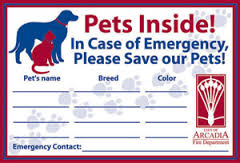Have a Heart And Ensure Your Pets Are Safe From Heartworm Disease
Heartworm is not something to be taken lightly, which is probably why there’s a special month to recognize what can be a very deadly disease if not caught early enough and treated.
And April is that month. During National Heartworm Awareness Month, there is no better time to get educated about the disease and steps you can take to prevent it.
Affecting dogs, cats, ferrets and some other mammals from coyotes and sea lions to even humans, which is rare, “heartworm disease is a serious and potentially fatal disease in pets in the United States and many other parts of the world,” according to the American Heartworm Society. “It is caused by foot-long worms (heartworms) that live in the heart, lungs and associated blood vessels of affected pets, causing severe lung disease, heart failure and damage to other organs in the body,” the website said.
The American Heartworm Society offers important information: 
In Dogs:
1. Dogs are “a natural host for heartworms.” The heartworms become adults, then mate and then have offspring. Without treatment the situation escalates and dogs can have hundreds of worms, which ends up in damage to the heart, lungs and arteries.
2. Signs can include decreased appetite, weight loss, mild persistent cough and fatigue after moderate exercise. As the disease progresses, pets may experience heart failure and a swollen belly because of extra fluid in the abdomen.
3. Have your dogs tested annually for heartworm, even if your dog is on heartworm prevention medicine.
In Cats:
1. Cats are an “atypical host” and the disease is different in them than it is in dogs as the worms typically do not mature to adults. Often it goes un-diagnosed. The immature worms can cause damage. The condition is heartworm associated respiratory disease. Remember, cats cannot use the same medication that dogs use to treat heartworm, so prevention is important.
2. Either subtle or dramatic, signs in cats can include lack of appetite, weight loss, coughing, vomiting or asthma-like attacks.
3. Much more difficult to detect in cats than in dogs, heartworm screening includes an antigen and an antibody test. “Because there is no approved treatment for heartworm infection in cats, prevention is critical,” the website said.
The best thing you can do is discuss a heartworm prevention program with your veterinarian. It’s better to be safe than sorry. Heartworm is deadly and you don’t want to put your beloved pet in harm’s way.
Celebrate National Adopt A Shelter Pet Day And Adopt A Furry Family Member
Every day thousands of dogs and cats in local shelters across the nation are looking for homes.
Due to that sad fact, National Adopt a Shelter Pet Day was established every April 30 to bring awareness to those animals. It’s a way to try to get people to go out to their local shelter and adopt a dog, cat, puppy, kitten or even a bunny.
The “unofficial” holiday is hopefully catching on as an important day not only to bring the homeless pet problem to the forefront but to also attract more people to shelters to adopt pets.
According to the ASPCA, “There are about 13,600 community animal shelters nationwide that are indepenedent; there is no national organization monitoring these shelters.” In addition, according to the website:
monitoring these shelters.” In addition, according to the website:
· There are roughly 7.6 million companion animals who enter shelters yearly in the U.S.: 3.9 million dogs and 3.4 million cats.
· Every year 1.2 million dogs and 1.4 million cats are euthanized.
· About 2.7 million animals in the shelters are adopted: 1.4 million dogs and 1.3 million cats.
With those numbers, it is plain to see there are so many more animals needing homes. It’s a great idea to have a holiday to remind people to go out and adopt a shelter pet.
To try to help make National Adopt a Shelter Pet Day a national holiday, you can send a letter to the President. Click here for more information.








Recent Comments